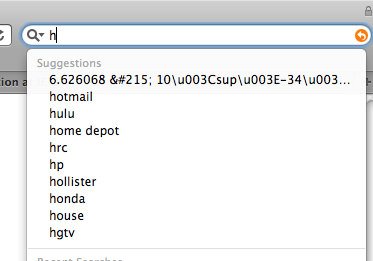On one of my blogs, there used to be automatically generated link posts via Delicious.com. The method was never very reliable, and I abandoned it as it was never updated from its rather basic functionality. In particular, every single link I saved on Delicious.com was re-posted (instead of, say, just the links marked with a “post-me” tag). But I miss the link roundups. So let’s bring them back.
How to choose appropriate terminology when writing a historical novel. Which of the following words would you expect were not being used at all in the early 19th century, or had a markedly different sense than in today’s English: manipulate, blink, looped, conversationalist, knowledgeable, traipsing? The writer Marie Robinette Kowal, author of (among other works), Glamour in Glass, which is set in 1815, presents her anachronism-busting method. It involves extracting a word list from Jane Austen’s oeuvre and looking up each non-Austen word in the OED. (Via Language Hat.)
Earliest know uses of some (many) of the words of mathematics and earliest known uses of some mathematical symbols:
FRACTAL. According to Franceschetti (p. 357):
In the winter of 1975, while he was preparing the manuscript of his first book, Mandelbrot thought about a name for his shapes. Looking into his son’s Latin dictionary, he came across the adjective fractus, from the verb frangere, meaning “to break.” He decided to name his shapes “fractals.”
Fractal appears in 1975 in Les Objets fractals: Forme, hasard, et dimension by Benoit Mandelbrot (1924- ). The title was translated as Fractals: Form, Chance, and Dimension (1977).
These pages, which must have been around for some time, are the work of Jeff Miller. Full of historical, lexical and typographical information and rich in references.
Tai, Chen-To: A historical study of vector analysis. I’m reviewing some of the maths I knew 15 years ago (gracious, am I rusty!) and came across this 1995 paper (available as a PDF file),which is even geekier (and certainly more specialized) than the pages in the previous link. It presumes familiarity with the subject of vector analysis as taught to math, physics or engineering students in their first years and covers historical texts mostly from mathematics and electromagnetism with respect to the notation of the derivatives (gradient, divergence, curl), with or without the Nabla operator ∇ (also called del). The author is opinionated and also has a second text, A Survey of the Improper Uses of ∇ in Vector Analysis.
Personal names around the world. A short but useful page from the World Wide Web Consortium.
People who create web forms, databases, or ontologies are often unaware how different people’s names can be in other countries. They build their forms or databases in a way that assumes too much on the part of foreign users. This article will first introduce you to some of the different styles used for personal names, and then some of the possible implications for handling those on the Web.
(Hat tip: Pat Hall on Facebook.)

